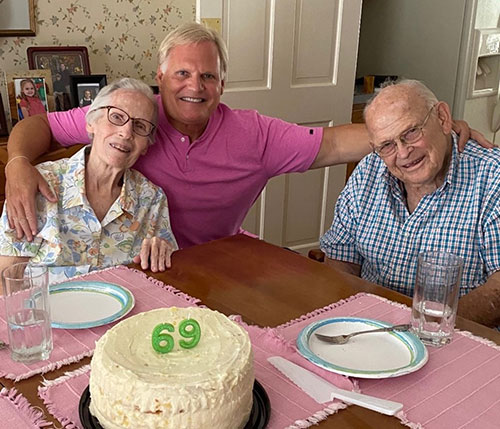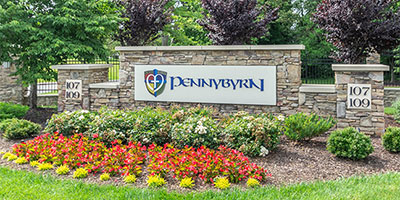Donation exceeds retirement community’s capital campaign goal
 Doug Witcher and his parents Ruth and Melvin on their 69th wedding anniversary.HIGH POINT — Doug Witcher, a leading businessman and philanthropist in High Point, recently donated $1 million to Pennybyrn retirement community, exceeding the organization’s capital campaign goal, Pennybyrn directors announced on April 30.
Doug Witcher and his parents Ruth and Melvin on their 69th wedding anniversary.HIGH POINT — Doug Witcher, a leading businessman and philanthropist in High Point, recently donated $1 million to Pennybyrn retirement community, exceeding the organization’s capital campaign goal, Pennybyrn directors announced on April 30.
His gift will make it possible to open an adult day center at Pennybyrn to be named in honor of his parents, Melvin and Ruth Witcher.
"We are profoundly grateful for Doug’s tremendous generosity and commitment to Pennybyrn's mission," said Rich Newman, president and CEO of Pennybyrn. "The Melvin and Ruth Witcher
Adult Day Center will enable us to expand our outreach and mission of ‘demonstrating God's love for the lives we touch.’”
The center will feature many of the same amenities traditional residents can access such as meals, events, activities, salon services, onsite health care, and rehab therapies. Construction has begun and will be completed later in 2024.
“The Melvin and Ruth Witcher Adult Day Center will offer caregivers and family members peace of mind knowing they may leave their loved ones temporarily and they will be well cared for, have a great time, and make new friends,” Witcher said. “The welcoming and supportive environment will benefit the person served and give caregivers time to take care of themselves, be with friends, or run errands, which will be a gift for them.”
Thanks to generous donors, Pennybyrn also recently completed the renovation of McEwen House, where skilled nurses provide memory support. The enhanced facility now offers a more supportive and engaging environment for residents who have memory-related conditions.
"We extend our deepest gratitude to Doug and all donors who have contributed to the Beyond the Horizon Capital Campaign," added Newman. "Together, we are continuing the legacy of care and compassion, originated by the Sisters, that defines Pennybyrn."
The Poor Servants of the Mother of God, a Catholic congregation of sisters, founded Pennybyrn in 1947. Today, the non-profit organization serves more than 450 senior adult residents.
— Annie Ferguson


